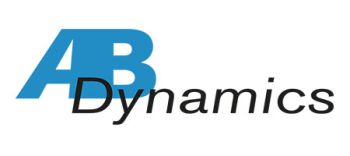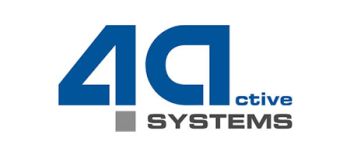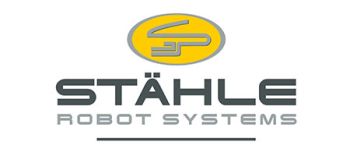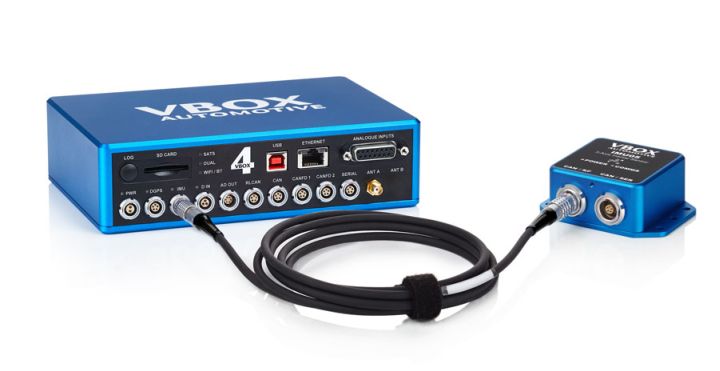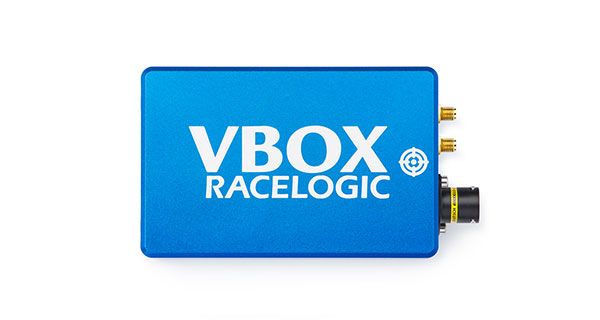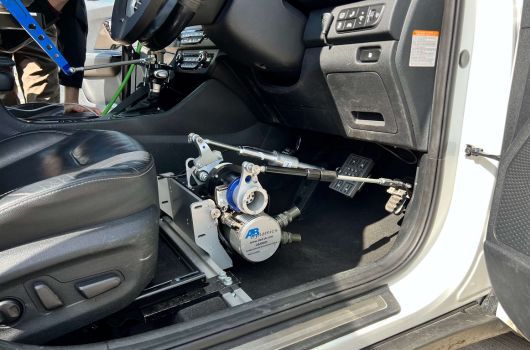Robot Integration
VBOX systems are compatible with driving robots from leading manufacturers including AB Dynamics and VEHICO, offering repeatable and consistent testing, for tests that require highly accurate path following.
VBOX Motion Pack for Driving Robots
Driving robots for steering and throttle/brake control are used in vehicle testing and development, where the test procedures call for absolute consistency that a human driver cannot perform. Driving robots are also invaluable where the manoeuvres are not considered safe to have a driver at the wheel or are extremely fatiguing to carry out, such as the Sine with Dwell element of ESC (Electronic Stability Control) testing or the HGV power steering failure test in UNECE R79.
For tests which need the vehicle to take a repeatable and highly accurate path control – such as Euro NCAP AEB or LSS assessment- a VBOX can be used as a motion pack to provide speed, heading, and positional data that is accurate enough for a driving robot to follow a predefined path to centimetre-level accuracy.
RACELOGIC offers several products that are ideal for use as a motion pack and integrate with leading manufacturers of driving robots.
What is a Motion Pack?
In autonomous or driverless vehicle testing, a motion pack is a system that provides the speed and positional data required to control the driving robots and ADAS (Advanced Driver Assistance Systems) soft targets. This is typically a GNSS-corrected inertial measurement system which can accurately measure the position, heading and attitudes of a moving vehicle and/or target object. The data is then fed back into the driving robot in a real-time closed loop to keep the vehicle on a desired path and/or to synchronise the movement of the vehicle and a soft target.
Robot controlled path following is increasingly used in vehicle dynamics testing, ADAS development testing, Euro NCAP testing, Homologation testing, Brake development, and Autonomous vehicle testing. The VBOX 100 Hz GNSS data logger in combination with an IMU05, as well as the VBOX 3iS inertial navigation system, have the accuracy and latency for use as a motion pack.
Why VBOX Motion Pack?
Without compromising on accuracy, VBOX Motion packs offer the most cost-effective robot-integrated solution on the market.
Using the latest GPS/GLONASS receiver that updates 100 times per second, VBOX 4 and VBOX 3iS are ideal for high dynamic applications. Both products deliver centimetre-level position accuracy when using RTK and highly accurate and consistent velocity, heading and acceleration data due to the high-grade inertial measurement unit.
The unique versatility of the VBOX motion pack allows you to carry out testing outdoors, indoors or a mix of both. In combination with our indoor positioning solution, VIPS, VBOX motion pack will seamlessly transition from indoor to outdoor testing with no drop in data.
The same motion pack set up that guides the driving robot can also be used independently as a standalone ADAS test set-up without robot integration to carry out development / research and homologation tests such as ADAS testing, brake testing and heavy vehicle (e.g. R130 and R131) testing.
Additionally, VBOX motion packs are designed to work alongside our high-end video products to accurately synchronise the data with up to 4 external video sources to 1/100th of a second.
- Compatible with leading driving robot manufacturers
- Centimetre-level position accuracy
- CAN output
- Ethernet output
- Compatible with indoor testing (VBOX 4)
- Compatible with RACELOGIC video analysis (VBOX 4)
- The most cost-effective robot-integrated INS solution
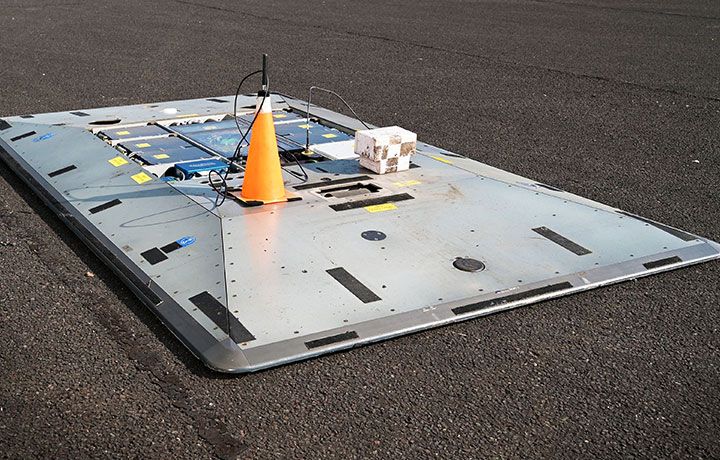
VBOX alongside an IMU (not pictured) being used as a motion pack to control the ABD Guided Soft Target (GST).
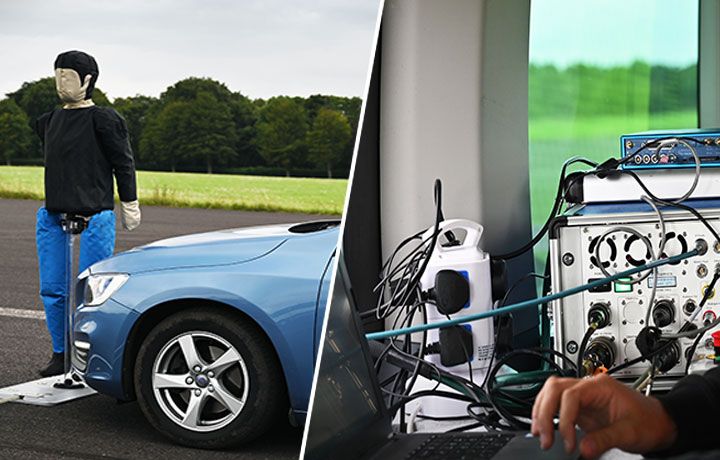
VBOX integrated into the controller of the AB Dynamics SPT20S soft pedestrian target to synchronise the movement of a dummy with that of an oncoming vehicle.
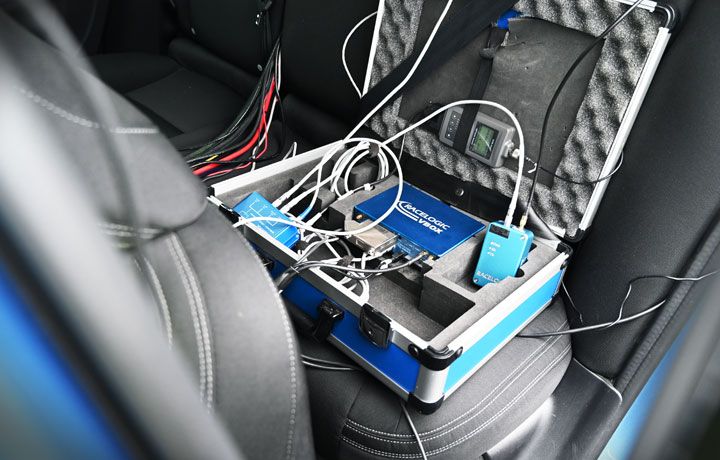
VBOX and IMU used as a motion pack to control the AB Dynamics SR15 Orbit steering robot.
Who is using VBOX Motion Pack?
VEHICO steering robot controlled by the VBOX
We have used the example of a lane change manoeuvre in the video above to demonstrate the level of consistency that can be achieved with a VEHICO steering robot using the VBOX for path-following applications.
AB Dynamics steering robot controlled by the VBOX
Robots from manufacturers such as Anthony Best Dynamics and Humanetics (DSD) are also compatible with the VBOX for path-following, allowing for a wide variety of testing of ADAS and vehicle dynamics.
ESC Testing with a Driving Robot
The high torque and steering wheel speed required to perform ESC testing means that a robot such as the ABD SR60 is essential. ABD take the CAN output from a VBOX 4 for speed, heading, yaw and roll rate at 100 Hz and feed it into the robot which conducts and guides the whole test.
The car is 'characterised', by determining the necessary steering angle to achieve the required amount of lateral g (known as a 'Slowly Increasing Steer' procedure). A “Sine with Dwell” test is then performed with increasing yaw and displacement, on both right and left turns.
With this combination of high-accuracy VBOX data and a driving robot, the FMVSS126 test procedures can be conducted with precision and consistency.
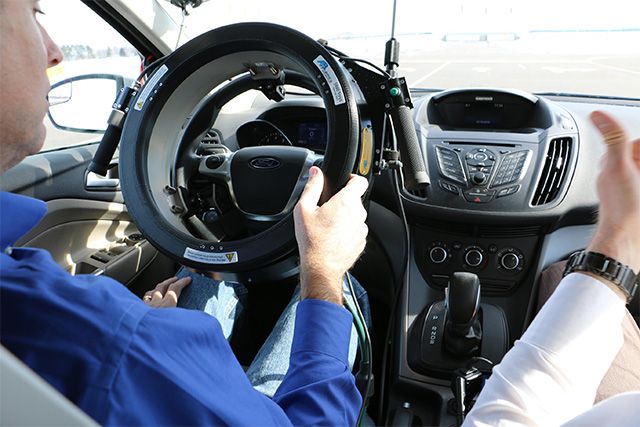
ADAS Testing with Robot Integration
Meeting the Euro NCAP standards requires the use of steering and pedal robots to maintain accurate conditions for speed, drive line, distance and braking, as laid out in the test requirements.
The VBOX 4 can be used with driving robots from NCAP approved manufacturers, such as Anthony Best Dynamics, to achieve the necessary level of consistency required when conducting such tests.


